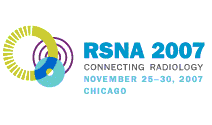
Abstract Archives of the RSNA, 2007
LL-PH5189
CARE Dose4D CT Automatic Exposure Control System: Physics Principles and Practical Hints
Education Exhibits
Presented in 2007
 Certificate of Merit
Certificate of Merit
Shawna L. Rego BS, Presenter: Nothing to Disclose
Lifeng Yu PhD, Abstract Co-Author: Nothing to Disclose
Michael Robert Bruesewitz, Abstract Co-Author: Nothing to Disclose
Thomas J. Vrieze RT(R), Abstract Co-Author: Nothing to Disclose
James M. Kofler PhD, Abstract Co-Author: Nothing to Disclose
Cynthia H. McCollough PhD, Abstract Co-Author: Research grant, Siemens AG
Research grant, RTI Electronics AB
1. To explain how this particular dose management tool functions.
2. To provide specific examples of CARE Dose4D's ability to significantly reduce dose.
3. To demonstrate methods to use CARE Dose4D effectively.
1. Introduction to Automatic Exposure Control systems.
2. Specific description of how Care Dose 4D operates.
3. Examples of dose reduction in patients and phantoms.
4. Use of CARE Dose4D to optimally image pediatric patients.
5. Use of CARE Dose4D when kVp is varied.
6. Use of CARE Dose4D in difficult-to-image cases, such as obese patients and patients with metal implants.
The teaching points of this exhibit are:
1. Automatic Exposure Control systems adapt the radiation dose to the individual patient very successfully.
2. Proper understanding of how the system operates is necessary for optimal performance.
3. Understanding the system and specific terminology improves technologist confidence to adjust settings for challenging situations.
4. CARE Dose4D can simultaneously enhance image quality and reduce patient dose, even in obese patients.
Rego, S,
Yu, L,
Bruesewitz, M,
Vrieze, T,
Kofler, J,
McCollough, C,
CARE Dose4D CT Automatic Exposure Control System: Physics Principles and Practical Hints. Radiological Society of North America 2007 Scientific Assembly and Annual Meeting, November 25 - November 30, 2007 ,Chicago IL.
http://archive.rsna.org/2007/5011233.html


 Certificate of Merit
Certificate of Merit